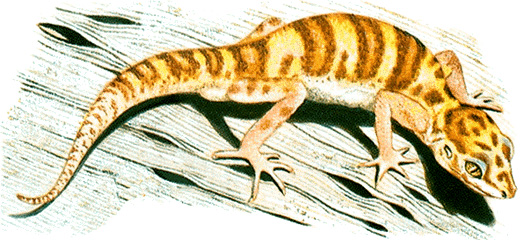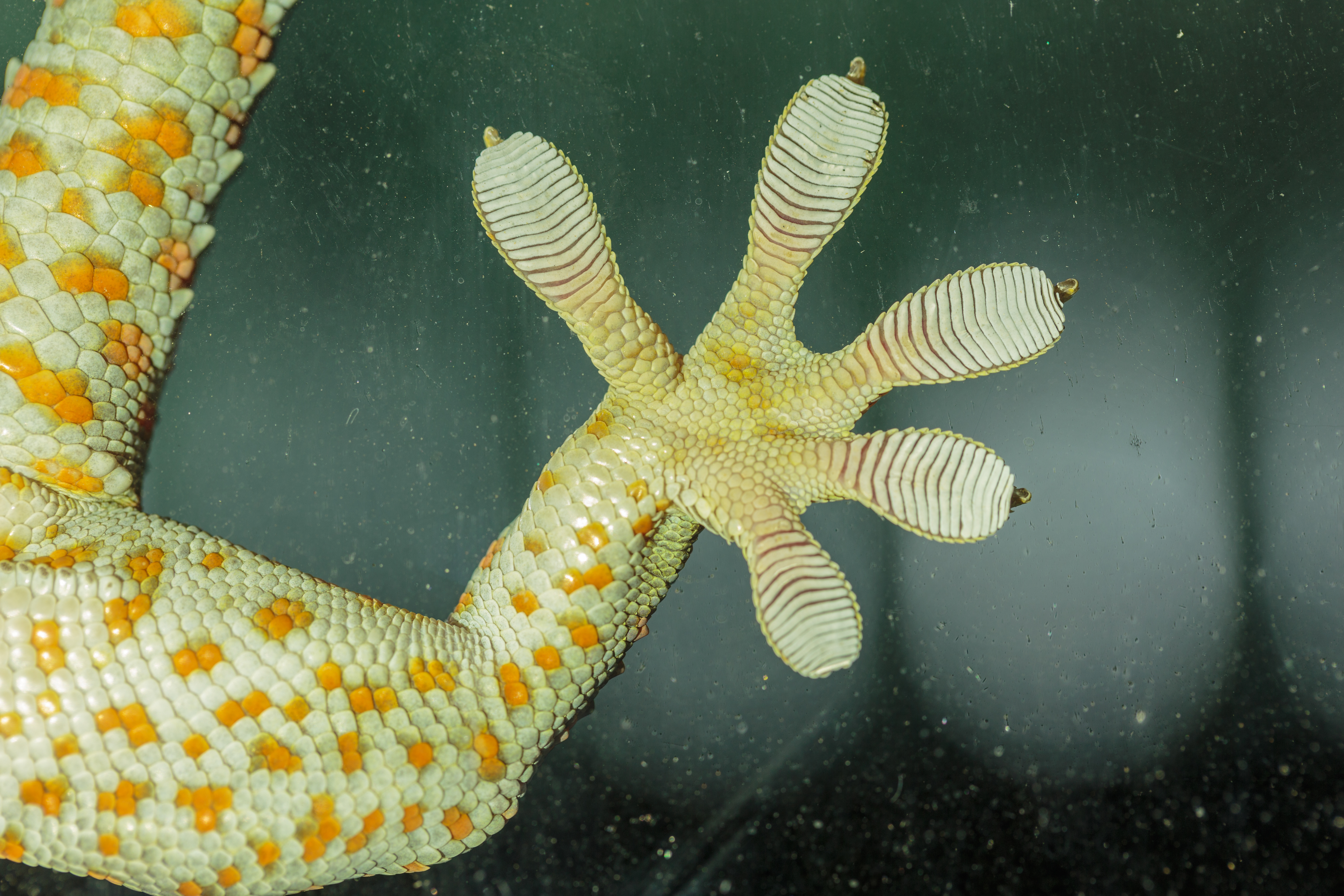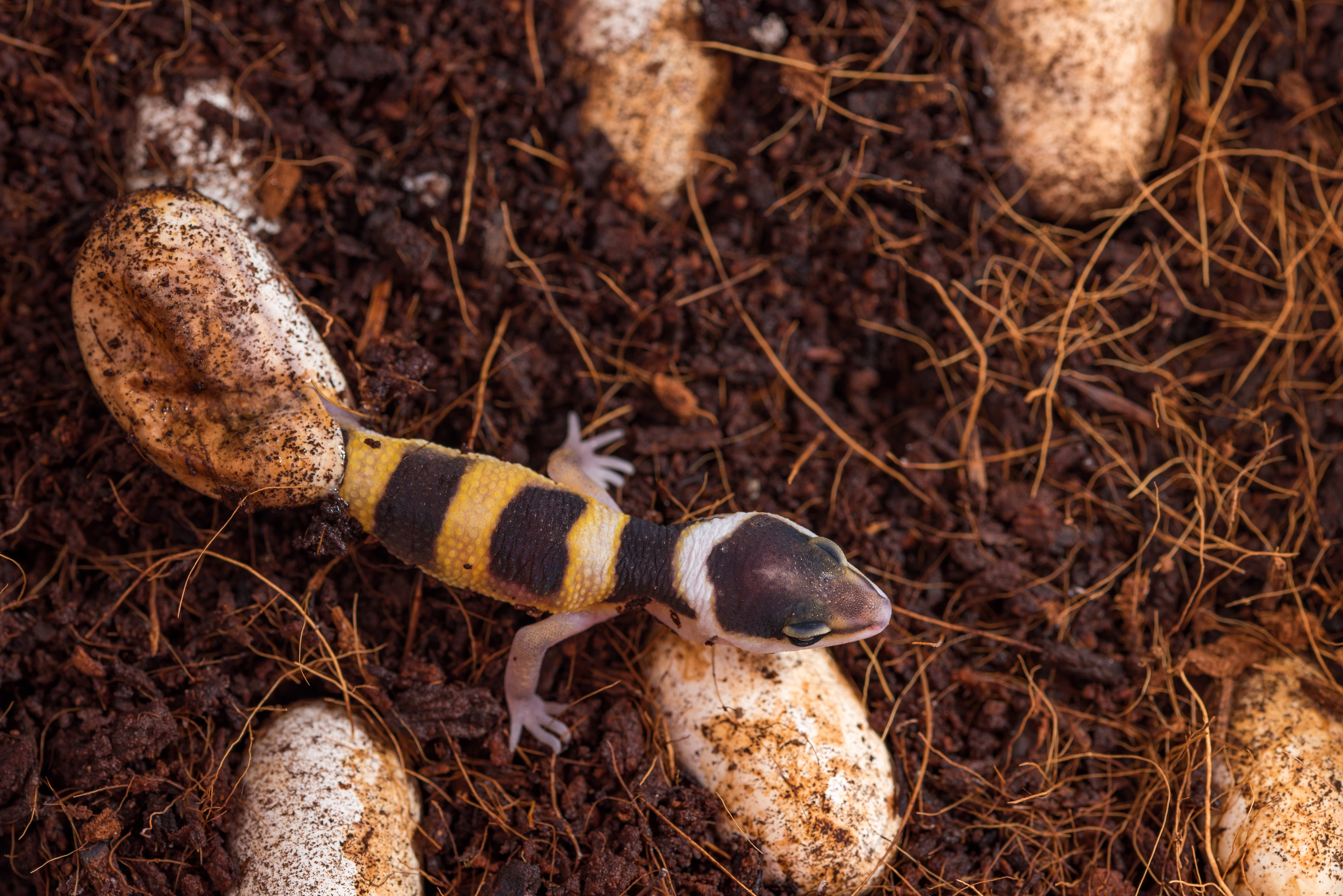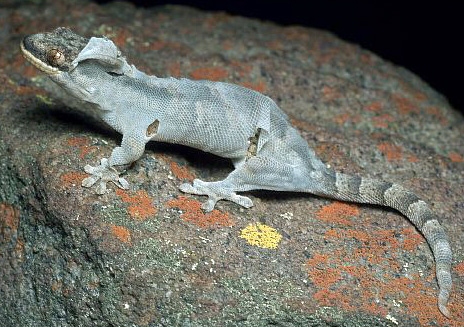Gecko, << GEHK oh, >> is the name of certain small, harmless lizards that live in warm climates. They have short, flat bodies covered with small, bumpy scales. Most geckos grow 4 to 6 inches (10 to 15 centimeters) long, including the tail. Many have catlike eyes with permanently closed, transparent eyelids. The toes of most geckos end with pads that have thousands of hairlike bristles. These bristles stick to most surfaces, making the animals good climbers. Some geckos can walk upside down on the underside of a branch or other horizontal surface.


Most female geckos lay eggs. In some species, the temperature at which the eggs are kept before they hatch determines the sex of the offspring. A few species consist only of females. Such geckos can reproduce without mating, but they give birth to female offspring.
Most geckos are active at night, when they hunt insects. If a gecko is attacked, it can distract an enemy by waving its tail. When the enemy attacks the tail, the tail breaks off but keeps wriggling. While the enemy holds the tail, the gecko runs away. It soon grows a new tail. Some geckos, called leaf tailed geckos, have a tail that resembles a leaf. This feature helps the gecko hide in trees.


Geckos are named for the loud call made by one species, the tokay gecko. Most species can make a chirping, squeaking, or barking sound.
